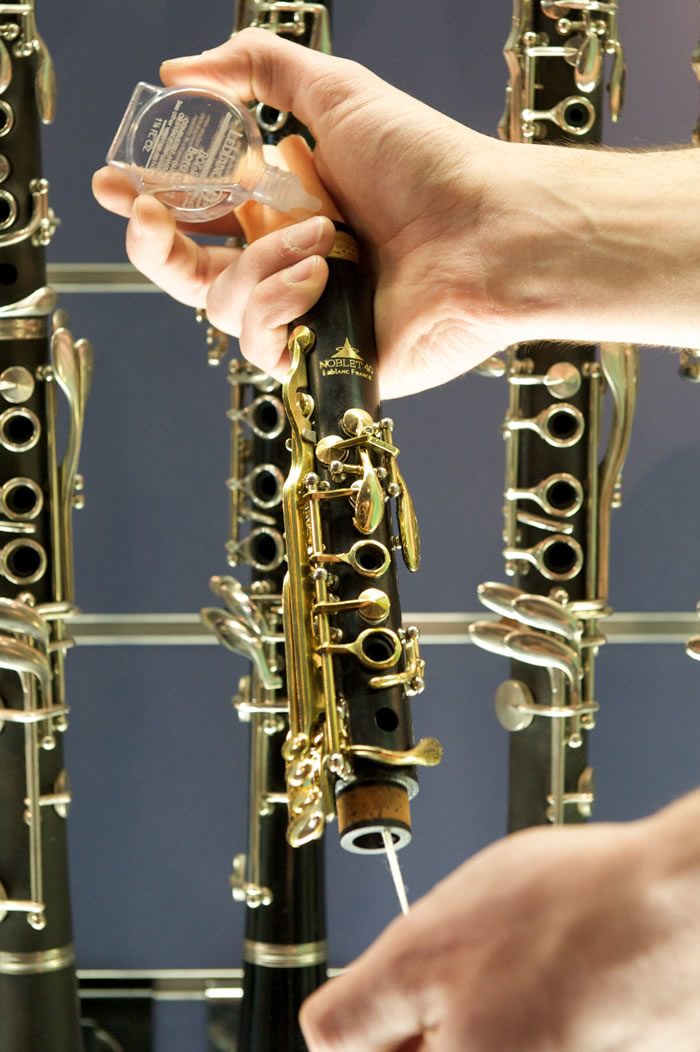Bore Oil - Wooden Instruments
- Posted on
- By Cal Barry
- Posted in Clarinet
Wood, as a living material, is very susceptible to changes in temperature and humidity. With heat, wood expands and when it gets colder, the reverse happens. Oiling can help stabilize it.

In low humidity environments like Melbourne the wood can dry out. In hot and humid areas like Brisbane, parts of your clarinet may swell a little if it is subjected to a lot of humidity. A lot of regular playing, where the airflow is constantly passing over and through the wood will also draw the moisture out of it. The problem with a dry instrument is that the chance of the wood cracking is greatly increased and once a crack has formed, while repairable, the instrument will most likely never play the same.
Simply then ... oiling will help prevent cracks occurring by preventing large changes in the moisture content of the wood.
What type of oil?
There are many different brands and formulas for bore oil. Most fall into two categories: mineral/petroleum based or plant based. We strongly recommend using a high quality plant derived oil. Many technicians will make their own blend of oil often using almond oil as a base with something like citrus oil to help prevent it going rancid. We really like the Dr's Products Grenad Oil which is meant to be a synthetically oil that is chemically the same as grenadilla oil.
So where do you put the oil?
For the first time you will need to cover a pull-through (cotton or flannelette are best) with bore oil or almond oil. Once the pull through has absorbed enough oil, pull it through each piece of the instrument. Be careful to not get excess oil onto the pads. Next, lightly wipe down the outside. We find it easiest to store the pull-through in a zip-lock plastic bag to prevent it from contamination by dust etc. Next time the pull-through will only require a couple of drops of oil.
How often should I oil the bore and outside of my instrument?
It really depends on the environment the instrument lives in and how much playing time you get to do. Once you've seen your clarinet start to dry out you will easily be able to recognise the signs. If it looks dry and feels like it has no "silkyness" on the surfaces or the tenons (the joining part at the ends of each joint) turn a lighter brown - give the instrument an oil. A general guide would be every 2 - 3 months or 50 - 60 hours of playing - don't overdo it though. Get the balance right and your instrument will last you a long, long time.
